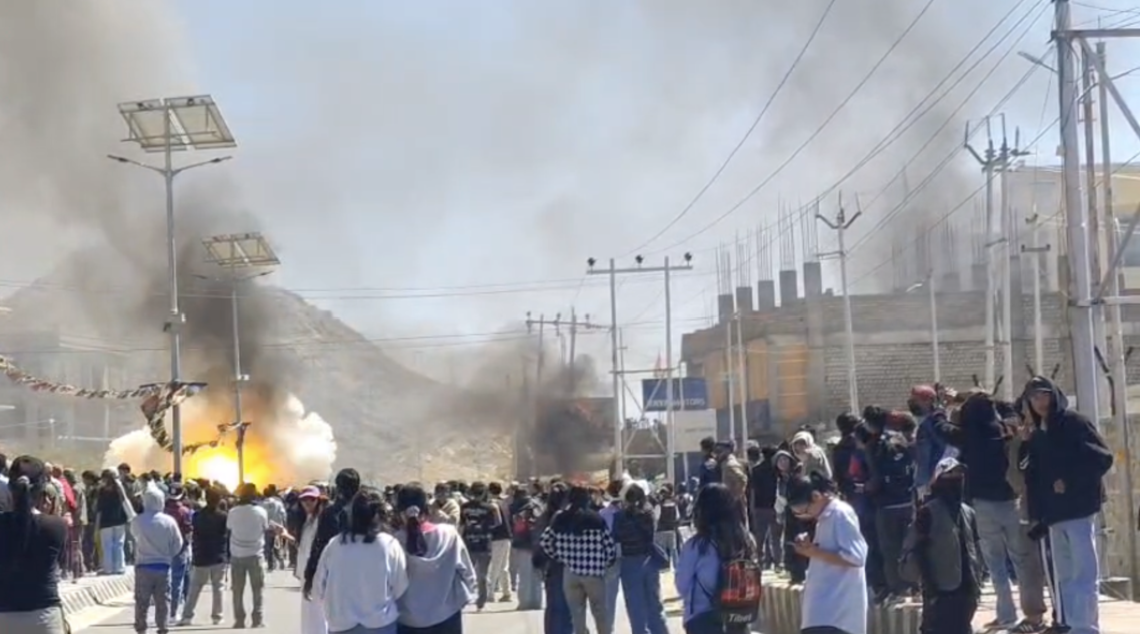How Ladakh Reached a Breaking Point: Understanding the Crisis Behind the September 24 Firing on Protesters
tear gas bombs outside BJP office in Leh on Sept 24, 2025
Ladakh has long been imagined as peaceful, remote, and stable — a borderland defined by stark beauty and deep patriotism. But the violence of September 24, when police opened fire on peaceful protesters in Leh, shattered that image and exposed years of unresolved tensions between the region and New Delhi. Tarushi Aswani’s new article documents the grief and anger unfolding on the ground.
Below is essential context to understand how Ladakh arrived at this moment.
What happened on September 24 — and why did it change everything?
On September 24, protesters gathered outside the BJP office in Leh to demand statehood, constitutional safeguards, and environmental protections for Ladakh. The demonstration began peacefully, led by students, elders, activists, and community leaders.
When police used tear gas and force against the crowd, the situation escalated. Eyewitnesses describe indiscriminate firing by security forces.
Four people were killed, more than 90 injured, and the region was plunged into curfew and an internet shutdown.
For Ladakhis, the scale and lethality of the response transformed a democratic movement into a crisis of trust.
What are Ladakhis fighting for?
Since 2019, when Jammu & Kashmir was bifurcated and Ladakh became a separate Union Territory, many in Ladakh have been demanding:
Full statehood
Sixth Schedule protections for Indigenous communities
Environmental safeguards to protect the fragile Himalayan ecosystem
Local control over land, jobs, and cultural heritage
These demands predate the protests and have been voiced through sit-ins, petitions, hunger strikes, and Gandhian forms of civil disobedience.
How did the 2019 reorganization shape today’s unrest?
In 2019, Ladakhis initially welcomed becoming a Union Territory, believing it would free them from decades of administrative neglect.
But over the past six years, many realized that UT status reduced local autonomy, concentrating decision-making power in New Delhi.
Local councils lost authority. Democratic mechanisms weakened.
Unemployment, development pressures, and fears of cultural erosion intensified.
The protests of 2025 grew directly out of this sense of displacement.
Why is Sonam Wangchuk’s arrest a turning point?
Climate activist Sonam Wangchuk has been a prominent voice calling for ecological protection and democratic rights. His hunger strikes and peaceful mobilizations drew national attention.
When he was arrested under the National Security Act and jailed 1,400 km away in Rajasthan, Ladakhis described the move as punitive and deeply alarming.
Many feel his detention criminalized their movement and signaled that dissent in Ladakh would be treated as a threat rather than a democratic right.
How are communities experiencing grief and anger?
Families of the deceased and injured describe the aftermath as devastating:
Some were killed while simply passing by.
Those wounded recount being shot in the upper body — raising questions about police intent.
Grieving families say no senior official visited or offered condolences.
The absence of accountability has deepened the region’s hurt.
Why has the accusation of being “anti-national” caused such pain?
Ladakh has one of India’s highest rates of military service. Nearly every household has members in the Army or security services.
To be called “anti-national” for seeking constitutional protections feels, for many Ladakhis, like a profound betrayal.
Retired soldiers, students, religious leaders, and artists all say the label has ruptured a sense of pride long tied to service and sacrifice.
What is the broader significance for India?
The Ladakh crisis reflects a pattern seen across India during the Modi government’s third term:
border regions and minority areas face shrinking democratic space, heightened militarization, and hostility toward dissent.
The firing in Leh is not only a local tragedy — it is a warning about the future of civil liberties at India’s peripheries.
Where does Ladakh go from here?
Dialogue between Ladakhi leaders and New Delhi has begun, but no substantive progress has been made.
For many in the region, the central questions remain:
Will the government acknowledge responsibility for the deaths?
Will democratic demands be heard instead of criminalized?
Can Ladakh protect its fragile environment and Indigenous identity?
Until these questions are answered, the silence in Leh — once filled with prayer flags and the bustle of daily life — remains heavy with grief, resilience, and waiting.
READ MORE: https://thediplomat.com/2025/11/how-indias-himalayan-frontier-lost-faith-in-modis-rule/



